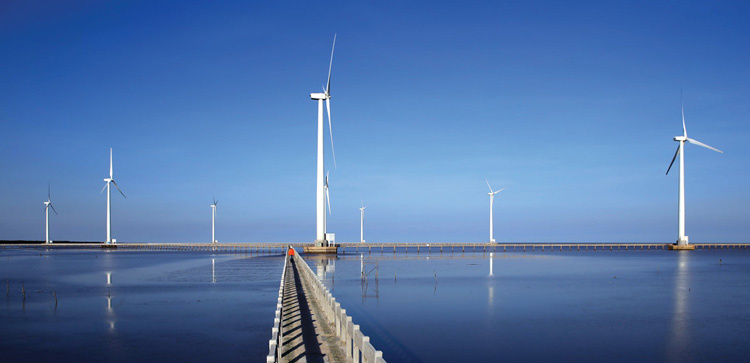
HCMC alone discharges 8,300 tons of waste every day, 76 percent of which is buried. Much of the waste could be recycled into clean energy.
The land fund for burying waste in large cities is getting scarce, while the demand for clean power in Vietnam is predicted to increase by 7 percent by 2020.
According to Eija Tynkkynen from Finpro, turning waste into power is the best choice.
The volume of waste in HCMC alone is big enough to generate 2 billion kwh of electricity each year.
HCMC authorities still have to spend VND2.2 trillion a year to treat waste, of which VND1 trillion is spent to treat waste at dumping grounds.
In fact, many investors have plans to develop renewable power projects in Vietnam and still have not started because they find the government’s encouragement policy is not attractive enough.
While the investment rate for renewable power is much higher than traditional power, the state’s support in Vietnam is lower than in other countries.
|
Many investors have plans to develop renewable power projects in Vietnam and still have not started because they find the government’s encouragement policy is not attractive enough. |
Kimmo Tuppurainen from Watrec, a Finnish biogas technology firm, said when the company built its plant in Thailand, it received strong support and a subsidy from the local government, but it cannot get this in Vietnam.
He also complained that the electricity purchase price in Vietnam is not high enough to satisfy investors.
According to Saku Liuksia from Finpro, the agency is cooperating with the Binh Duong Waste Treatment Company to collect gas from dumping grounds and treat it at a 1.6 MW plant.
The gas to be collected will be cleaned and provided to the Dong Thap Power plant to generate electricity.
Mikko Saalasti from Doranova Company said it will implement one of its largest projects in Vietnam — a landfill gas treatment plant worth 6 million euros, which is under construction in the suburbs of HCMC.
The plant aims to turn 35,000 tons of waste each year into power and help reduce greenhouse gas emissions.
In Hanoi, the waste-to-energy plant of Watrec is under construction. It will classify and convert waste, including some kinds of inorganic waste into biogas.
According to Matti Miinalainen, after a period of providing controlling systems to six plants with the capacity of 1,000 MW in Vietnam, his company has begun building a large waste treatment plant, and it plans to provide DCS (distributed control system) during the operation of the plant.
He said in general investors need to consider three factors when calculating the feasibility of projects – the supply of waste, the fee businesses collect from waste suppliers, and the electricity price at which EVN (Electricity of Vietnam) purchases from investors.

 Previous page
Previous page Back to top
Back to top







